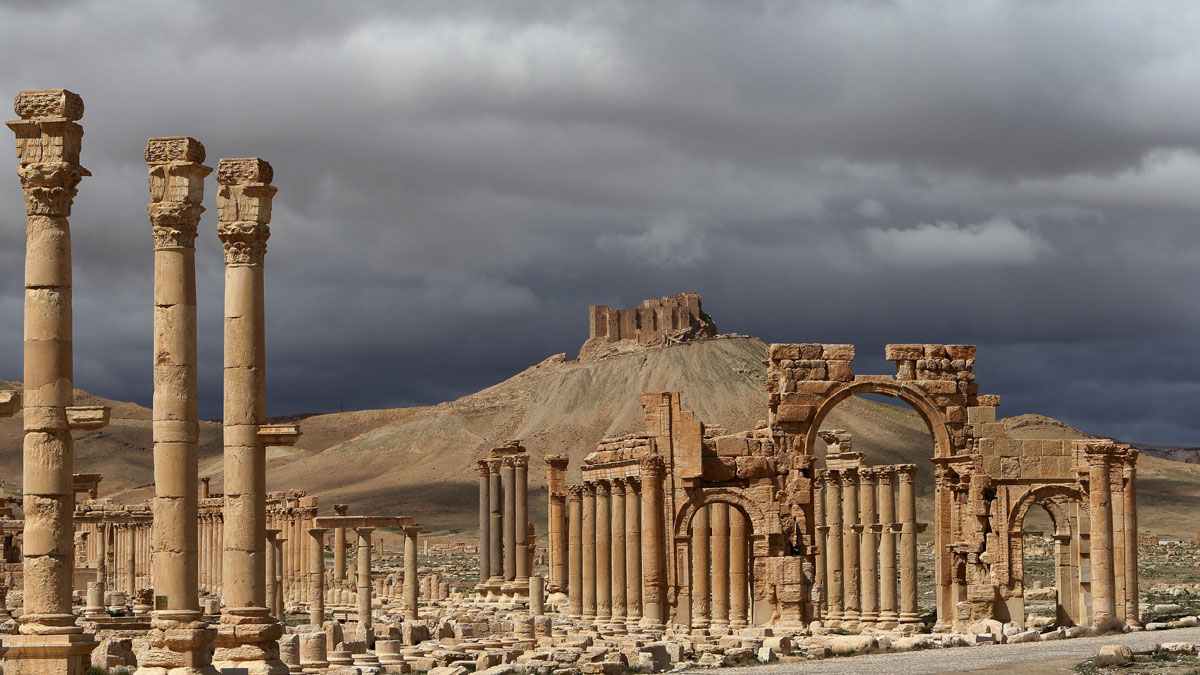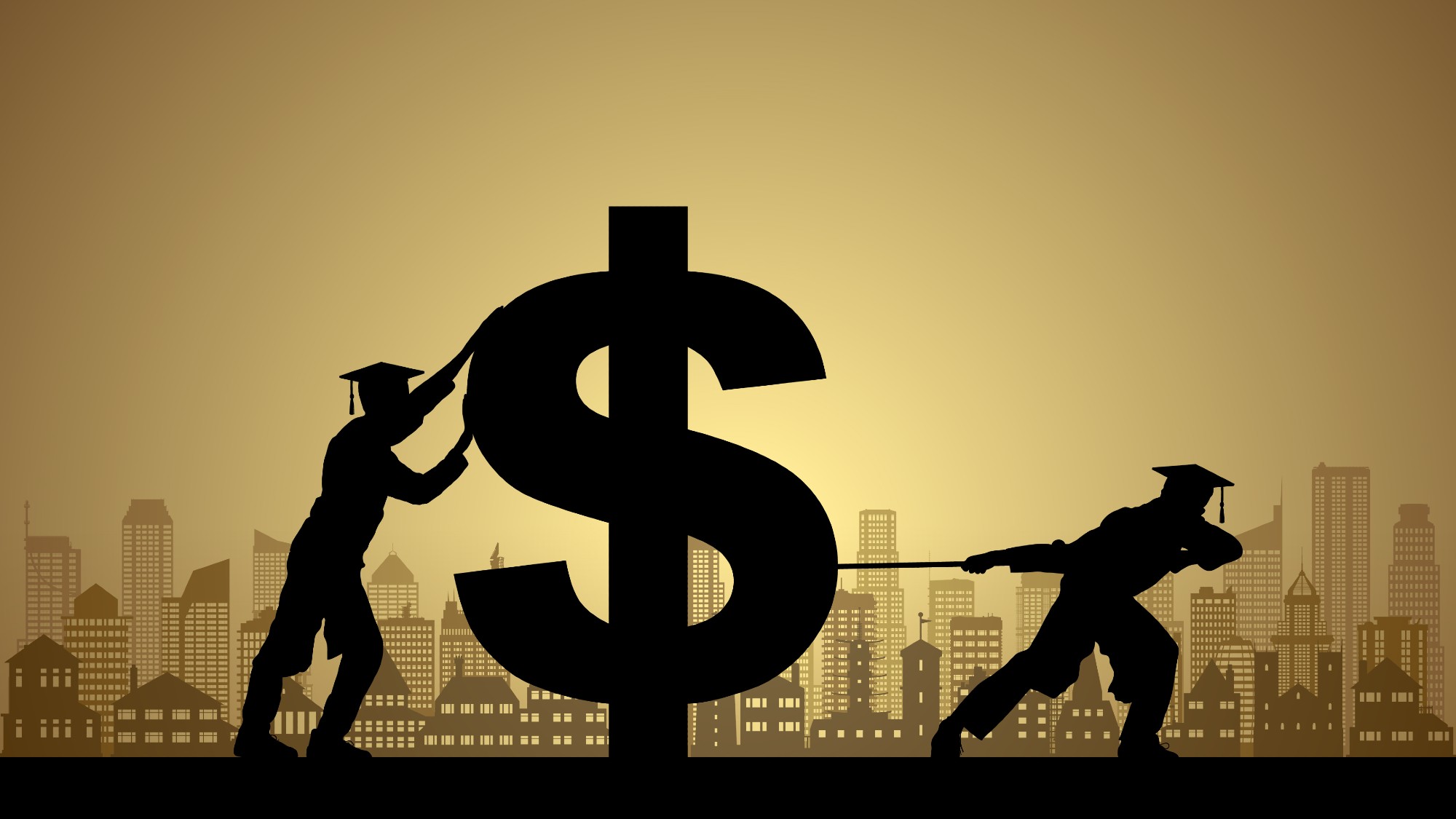Islamic State retakes Palmyra in Syria
Defeat raises questions about the ability of regime to hold on to territory

Syrian troops enter ancient city of Palmyra, says state TV
24 March 2016
Syrian forces have entered the Islamic State-held city of Palmyra, according to state television.
The broadcaster showed government warplanes, helicopters and army trucks approaching as part of a Russian-backed offensive to recapture the historic city.
The Week
Escape your echo chamber. Get the facts behind the news, plus analysis from multiple perspectives.

Sign up for The Week's Free Newsletters
From our morning news briefing to a weekly Good News Newsletter, get the best of The Week delivered directly to your inbox.
From our morning news briefing to a weekly Good News Newsletter, get the best of The Week delivered directly to your inbox.
However, the footage has not yet been independently verified and activists and monitoring groups says the troops are still on the outskirts of Palmyra.
The offensive began last week with the fall of "Hill 900", a strategic vantage point. Although a fragile ceasefire is still largely in force across the war-torn country, action against designated terrorist groups is permitted.
Civilians were allowed to flee as IS fighters announced via loudspeakers that fighting was closer, the British-based Syrian Observatory for Human Rights told Reuters.
Palmyra, a Unesco World Heritage Site, is considered to be one of the most important cultural centres of the ancient world. It was seized by IS last May and militants have systematically destroyed ancient structures and artefacts they believe to be "un-Islamic".
A free daily email with the biggest news stories of the day – and the best features from TheWeek.com
"A victory in Palmyra would be a significant morale boost for the Assad regime, which is engaged in stalled peace talks in Geneva," says The Guardian. "It would also be a propaganda victory for Moscow, which launched a campaign to safeguard Assad's rule last October."
Russia last week announced it was withdrawing its troops from the country but remains both politically and militarily involved in the conflict.
Opposition activists from Palmyra have accused its troop of bombing civilian targets.
"Russian planes, missiles and artillery have not stopped bombing the city indiscriminately as part of a scorched earth policy, without differentiating between humans and rocks," members of the Palmyra Local Coordination Committee said.
What is Palmyra?
Unesco describes the city as an "irreplaceable treasure" which stands at the crossroads of several ancient civilisations. Palmyra once served as an important trade route linking Persia, India and China with the Roman Empire and remains strategically important due to its proximity to gas fields.
How old is the city?
There is evidence of habitation from the Neolithic period of pre-history onwards at Palmyra (stone tools found there were dated to 7500 BC). By around 2000 BC, it had become an important caravan stop, an oasis sought out by traders crossing the desert.
Who built it?
The city is mentioned in the Old Testament and was at its height just after the time of Christ. The ruins are a mishmash of Greek, Roman, Persian and Islamic cultures, with the majority of the colonnades, temples, bathhouses and arches dating to the first century AD, says the New York Times.
Why does IS destroy antiquities?
Experts say the destruction of the ancient structures and artefacts are an attempt to obliterate all other cultures or religions from the new Islamic "caliphate".
One militant was recorded in a propaganda video saying: "The monuments that you can see behind me are but statues and idols of people from previous centuries, which they used to worship instead of God."On screen text added: "Those statues and idols weren't there at the time of the Prophet nor his companions. They have been excavated by Satanists."
The terrorist group revels in the destruction "as it highlights its ability to operate with impunity" as well as the failure of the international community to put a stop to its actions, says The Guardian. IS also profits from the illicit trade in looted artefacts.
Archaeologists use 3D cameras to save Palmyra from Islamic State
28 August
Archaeologists are planning to use thousands of 3D cameras to preserve historic artefacts under threat of destruction by Islamic State.
Scientists from Oxford and Harvard universities have set up The Million Image Database Project to create a digital archive of the valuable artefacts.
A team of "digital-age monuments men" told The Times that they plan to "flood the Middle East" with the cameras and enlist local partners to photograph as many items of historical significance as possible.
The 3D cameras, which cost as little as £20 each, are easy to operate and will be suitable for even "inexperienced users" such as military personnel and charity volunteers in the region, say scientists.
Islamic State militants have launched a number of attacks on the ancient Syrian city of Palmyra, recently destroying the 2,000 year old Roman-era Baalshamin Temple.
"Palmyra is rapidly becoming the symbol of Isis's cultural iconoclasm," says Roger Michel of Oxford University's Institute for Digital Archaeology. "But there is hope. By placing the record of our past in the digital realm, it will lie forever beyond the reach of vandals and terrorists."
The project, set up by the Institute for Digital Archaeology working in partnership with Unesco, will cost £2 million and aims to compile 20 million pictures of artefacts before 2017.
According to The Times, if the treasures captured on camera are destroyed by militants, 3D printing technology can be used to reconstruct them.
Scientists say the database will also help the authorities to clamp down on the global black market trade of looted antiquities.
"It will include GPS data and dates," says Michel. "If someone is selling an object and says it was obtained in Syria in the 1930s we will know that was not the case because in 2015 it was at longitude X and latitude Y."
Islamic State militants destroy ancient Baalshamin Temple
24 August
Islamic State militants have reportedly blown up an ancient temple in Palmyra, the latest in a series of attacks on the historic Syrian city.
Syrian officials and activists have confirmed that the Baalshamin Temple has been destroyed, though there are conflicting reports as to when the attack took place.
The 2,000 year old Roman-era temple dedicated to the Phoenician god of storms was "extremely important" and had been "almost totally intact", says the BBC's Vincent Dowd.
Syrian antiquities chief Maamoun Abdulkarim said that the inner temple had been completely destroyed by explosives and the columns surrounding the ruins had also collapsed.
The Unesco World Heritage Site, considered to be one of the most important cultural centres of the ancient world, was seized by IS militants in May. It sparked fears that fighters who consider the ancient temples to be un-Islamic would destroy the city.
Militants have since carried out executions in the ancient theatre, destroyed the famous Lion of al-Lat statue and transformed the museum into a prison and a courtroom, according to an AFP report published in the Guardian.
Director general of Unesco, Irina Bokova, warns that IS is engaged in the "most brutal, systematic" destruction of ancient sites since the Second World War.
News of the attack comes just days after IS jihadis beheaded an 82-year old antiquities expert based in Palmyra. The destruction of the temple is the latest in a series of attacks on ancient ruins and other archaeological sites.
"Our darkest predictions are unfortunately taking place," said Abdulkarim.
Islamic State militants behead antiquities expert in Palmyra
19 August
An 82-year-old man who devoted 50 years of his life to studying the ancient buildings of Palmyra in Syria has been decapitated by Islamic State after more than a month of interrogation, Syria's state head of antiquities has said.
Maamoun Abdulkarim told Reuters that Khaled Assad was executed on Tuesday, adding that he was told the news by the scholar's family.He said: "Just imagine that such a scholar who gave such memorable services to the place and to history would be beheaded... and his corpse still hanging from one of the ancient columns in the centre of a square in Palmyra."He added: "The continued presence of these criminals in this city is a curse and bad omen on [Palmyra] and every column and every archaeological piece in it."While Abdulkarim said the body was hung from an "ancient column" in the heart of the site's antiquities, the Daily Mail reproduces a censored photo which it says show his remains chained to a railing in a modern part of the city.It is not clear whether the remains were later moved to the site of antiquities or if the initial report was incorrect. The images were apparently shared by IS on social media and show the 82-year-old's severed head placed between his feet.When IS took control of Palmyra in May, there was concern that the group might vandalise or sell off the city's many antiquities.They had previously destroyed ancient artefacts in Iraq, decrying them as un-Islamic.No evidence has yet emerged of the destruction of Roman-era antiquities at Palmyra but the militant group has blown up two ancient shrines near the city.
Khaled Assad was known for research he published in archaeological journals, Abdulkarim said. He also worked with US, French, German and Swiss archaeologists as they dug among the 2,000-year-old ruins.
Islamic State in 'full control' of Palmyra
21 May
Islamic State fighters are now in "full control" of the ancient city of Palmyra and have entered the site containing prized ruins, reports the BBC.
The Syrian Observatory for Human Rights said this morning there was no evidence yet of destruction at the city's Unesco World Heritage Site, which includes ancient temples and colonnaded streets.However, the group added that IS now controls the nearby air base, prison and intelligence headquarters. Syria has pulled pro-Assad troops out of the city, after more than 100 were reportedly killed in clashes.Palmyra is a highly significant site for several reasons. The city is located at a strategic crossroad for key highways leading to Damascus and Homs, and east into Iraq.It is also the location of several prized ancient ruins, and is known by historians as the Venice of the Sands. IS has previously destroyed pre-Islamic archaeological treasures in Iraq, condemning them as idolatrous."This is the entire world's battle," said Syria's head of antiquities Maamoun Abdul Karim. He said he feared that IS would "destroy everything" if they seized Palmyra.Hundreds of moveable statues and other ancient artefacts were moved to safer locations ahead of the IS onslaught but many larger historic items, including stone tombs, could not be moved.
Sky News foreign affairs editor Sam Kiley said it is also "very profoundly important" that IS has now overrun the local prison, which is one of the most notorious in the country.
-
 ‘Capitalism: A Global History’ by Sven Beckert and ‘American Canto’ by Olivia Nuzzi
‘Capitalism: A Global History’ by Sven Beckert and ‘American Canto’ by Olivia NuzziFeature A consummate history of capitalism and a memoir from the journalist who fell in love with RFK Jr.
-
 Who will the new limits on student loans affect?
Who will the new limits on student loans affect?The Explainer The Trump administration is imposing new limits for federal student loans starting on July 1, 2026
-
 Why does Susie Wiles have MAGA-land in a panic?
Why does Susie Wiles have MAGA-land in a panic?TODAY’S BIG QUESTION Trump’s all-powerful gatekeeper is at the center of a MAGA firestorm that could shift the trajectory of the administration
-
 How Bulgaria’s government fell amid mass protests
How Bulgaria’s government fell amid mass protestsThe Explainer The country’s prime minister resigned as part of the fallout
-
 Normalising relations with the Taliban in Afghanistan
Normalising relations with the Taliban in AfghanistanThe Explainer The regime is coming in from the diplomatic cold, as countries lose hope of armed opposition and seek cooperation on counterterrorism, counter-narcotics and deportation of immigrants
-
 Femicide: Italy’s newest crime
Femicide: Italy’s newest crimeThe Explainer Landmark law to criminalise murder of a woman as an ‘act of hatred’ or ‘subjugation’ but critics say Italy is still deeply patriarchal
-
 Brazil’s Bolsonaro behind bars after appeals run out
Brazil’s Bolsonaro behind bars after appeals run outSpeed Read He will serve 27 years in prison
-
 Americans traveling abroad face renewed criticism in the Trump era
Americans traveling abroad face renewed criticism in the Trump eraThe Explainer Some of Trump’s behavior has Americans being questioned
-
 Nigeria confused by Trump invasion threat
Nigeria confused by Trump invasion threatSpeed Read Trump has claimed the country is persecuting Christians
-
 Sanae Takaichi: Japan’s Iron Lady set to be the country’s first woman prime minister
Sanae Takaichi: Japan’s Iron Lady set to be the country’s first woman prime ministerIn the Spotlight Takaichi is a member of Japan’s conservative, nationalist Liberal Democratic Party
-
 Russia is ‘helping China’ prepare for an invasion of Taiwan
Russia is ‘helping China’ prepare for an invasion of TaiwanIn the Spotlight Russia is reportedly allowing China access to military training